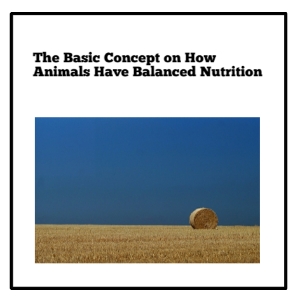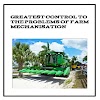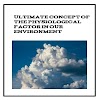Livestock feed is generally known as the food given to farm animals.All farm animals need feed to grow, repair worn out tissues, energy for the well being of animals.
Classifications of Livestock Feed
Animals feeds can be grouped into four main classes.These are:
1. Basal/ Energy Feeds or Carbohydrates.
2. Protein concentrate
3. Mineral/Vitamin Supplement
4. Roughages
Energy Feeds or Carbohydrates Concentrates.
A basal feed is the type of feed that the crude fibre content is less than 18%.This feed is very low on protein and low in fibre.It is very low minerals.Basal feed is very high in carbohydrates or fats. This feed is highly digestible. Basal feeds are the one that has high carbohydrates or starch food. e.g maize, cassava etc.
Protein Concentrate
This feed is the type of feed that has a crude fibre content that is less than 18%.They are very low in minerals and fibre.The protein concentrate is very high in protein.Protein concentrate is low in carbohydrates and fats.This feed is highly digestible.
Mineral/Vitamin Supplement
This feed is required in small quantities in the feed.They supplement the energy and protein concentrate.This feed is very low in protein and low in and energy.This feed is highly rich in vitamin and minerals. This feed aid food digestion.Vitamins help their body to resist diseases.Mineral/Vitamin Supplement is low in fibre and this feed is necessary for the growth and development of animals.This feed include minerals, vitamins,and essential amino acid.
Roughages
This feed has alot of fibre that is more that 18% in it's contents.This feed is rich in fibre.This feed is very low in protein.This feed has low digestion.Roghages is low in digestible carbohydrates. Roughage can be grass and legumes.Roughages exist in different forms such as hay,straw, soilage, and silage.
Hay and Straw are the dry roughages while silage and soilage are fresh roughages.
(a) Hay:- Hay is the aerial part of a young and succulent grass or herbage cut and dried for feeding animals.This feed is very cheap source of food for ruminants animals.This feed is given to ruminants animals during dry season where green grasses are not easily available.This feed is highly nutritious than straw.
(b) Straw: Straw refers to the part of grass or some harvested crops that is cut and stored for the use in the future. Straw is very difficult to digest for ruminants animals.This feed is not really nutritious but to keep the animal alive. Straw I'd from the plants that are cut after the crops have been harvested then, the remains are cut,dried and fed to animals.
(c) Soilage: This is the feed that are being given to animals after cutting it fresh and succulent.This feed is highly nutritious and have high moisture. Soilage is also referees to zero grazing because the animals are not allowed to wander around to search for food but the soilage is sent to them.
(d) Silage:- This refers to the preservation of green and succulent forage under anaerobic conditions.The following are the method of preparing silage.These are:
(i) Dig the pit to the size and depth you want.
(Ii) Cut the forage plants at the right stage before flowering.
(iii) Chop the grass into pieces.
(iv) Place the chopped grass under the sun for about a day.
(v) Line the pit inside with palm fronds, banana leaves or cocoyam leaves to avoid sand from touching the chopped grass.
(vi) Load the chopped grass into the pit in stages.Don't pour it inside anyhow.
(vii) Compress each layer by rolling a very heavy object on each layer to the remove the air so that it won't spoil.
(viii) Make sure you sprinkle minerals acid after each layer to prevent from spoiling.
(ix) Deposit other layer and compress the layer untill the grass is finished.
(x) Finally compress the heap.
(xi) Spread a polythene sheet over the heap to ward away water.
(xii) Provide a shade over the heap.
Methods of Preparing Feed
(1) Blood meal: Collect a fresh blood and allow it to clot in the open. After the clotting, heat the blood meal to remove the water content in the blood and to kill the pathogens. After successfully heating, the blood is now crushed into powder to feed.This feed is highly rich in protein.
(2) Fish Meal: Fish meal can be prepared in two major ways.This feed is highly nutritious and rich in protein. These are: dry and wet process.
(a) Dry Process: Get the fresh fish, sun dry or smoke it to dry by reducing the moisture content, then you crush it into powder and feed the animals.
(b) Wet Process: Get the fish, heat it with steam, the dry it and grind into powder.
(3) Groundnut/Palm Kernels: Collect the seed of Groundnut or palm kernel, crush, and press to remove the oil.Then press the remnants with machines to form cakes which are dried.
(4) Cotton seed meal:- Collect cotton seeds, grind them and remove the oil from the crushed seeds.Dry the remnants.
(5) Bone Meal: Bone Meal can be prepared in two different ways which includes:
(a) Dry Process: Collect bones, dry and burn them, then, crush the dried bone to the texture you want.
(b) Wet Process : Collect the bone, heat the bones under steam temperature, crush and dry it.
(6) Maize/ Guinea Corn: Remove grains from the cobs, then dry the removed grains and grind to your desired texture.
Food Nutrients of Livestock
There are six classes of food nutrients which are needed by animals for growths and proper development.These are Carbohydrates, Proteins, Fats and Oil, Minerals, Vitamins and Water.
(i) Carbohydrates: This is made up of carbon, oxygen and hydrogen.
This feed provides energy to farm animals for growth, reproduction, milk production etc. The source of carbohydrates includes maize, guinea corn, rice, millet, yam, plantain,forage grasses,hay, silages, etc.
(ii) Proteins:- Protein is composed of oxygen, hydrogen, carbon and it contains nitrogen , sulphur and phosphorus sometimes. It is essential for growth of young ones, repair worn out tissues, required for milk , meat and egg production.
The source of Proteins are soyabeans, Groundnut cakes, palm kernel, lysines, cashew nut,cotton seed etc
(iii) Fats and Oil: Fats are made of carbon, hydrogen and oxygen.This feed provides energy that carbohydrates, it improves the palatability of diet, it helps to maintain body temperature.Sources of fats and oil are palm kernel, milk,lard, Groundnut cakes etc
(iv) Minerals: They are metallic element. They includes potassium, calcium, chlorine,Cobalt, manganese,zinc etc.These are required by livestock to build their bones,teeth.
Sources of Minerals includes: bone meal,oyster shell, limestone , salt licks etc
(v) Vitamins: These are organic substance that are required by animals for proper growth and development of the body.Vitamin is essential for proper eye sight, it aids enzymes formation.Sources of Vitamins are folic acid, riboflavin niacin, thiamine, fish meal, bone meal etc
(vi) Water: This is very important for livestock management and the most essential for all living things.Water is used to clean animals pens, washing animals.It is essential for metabolic digestion.The sources of water includes: rain water, fresh fodder, water from rivers etc.







0 Comments